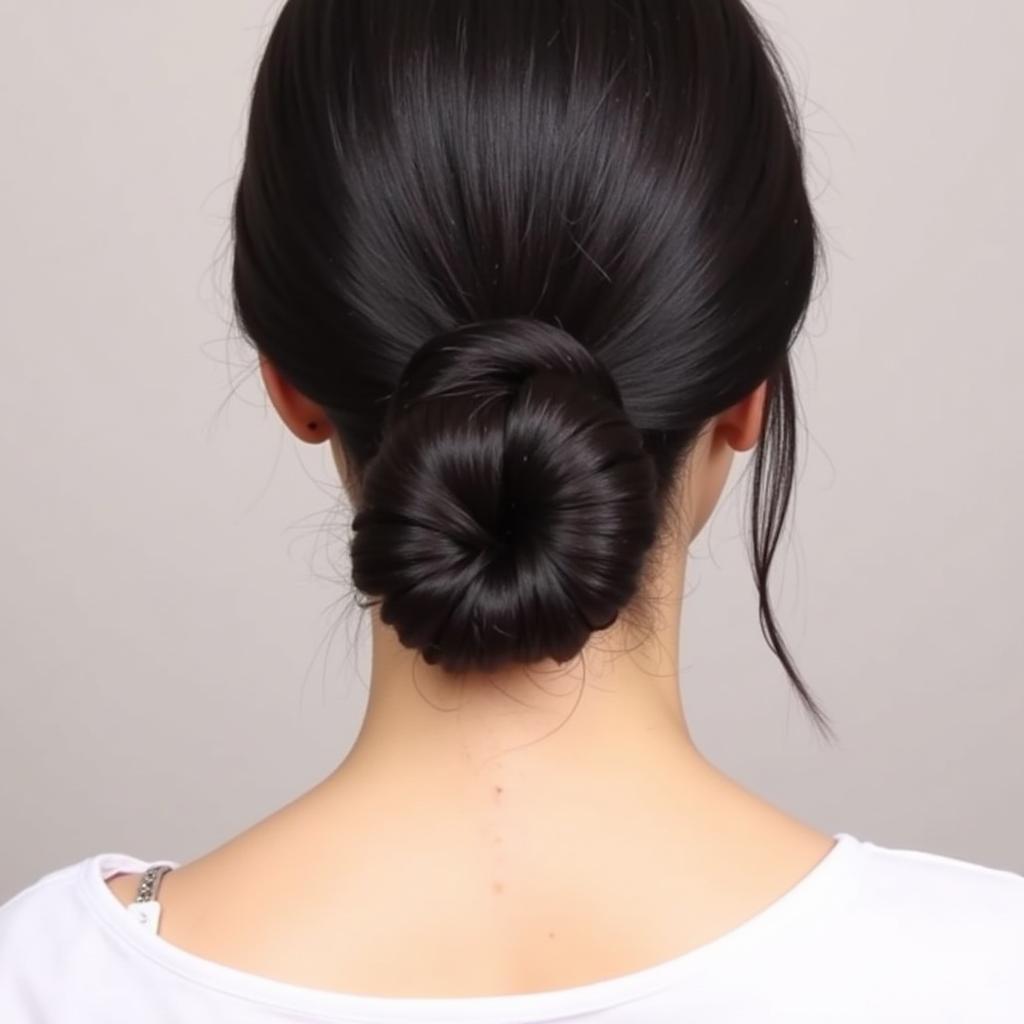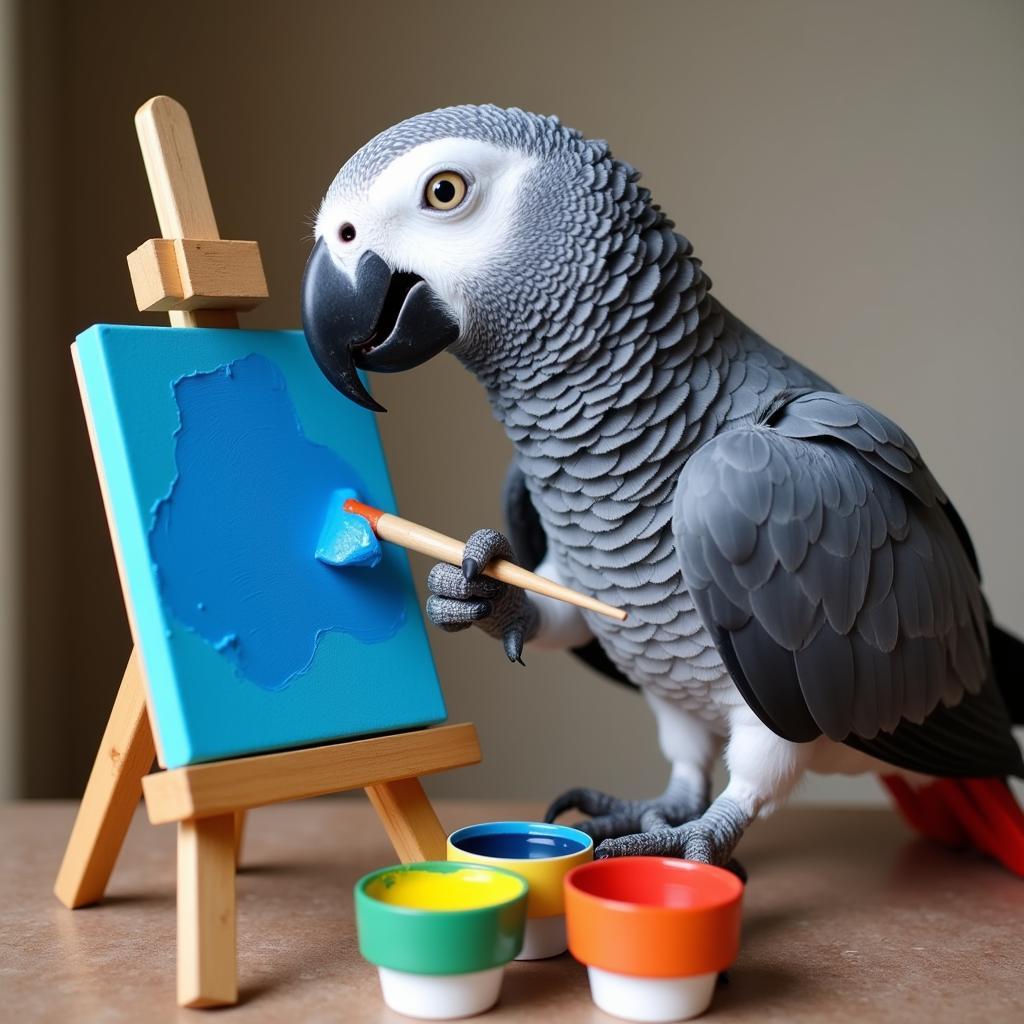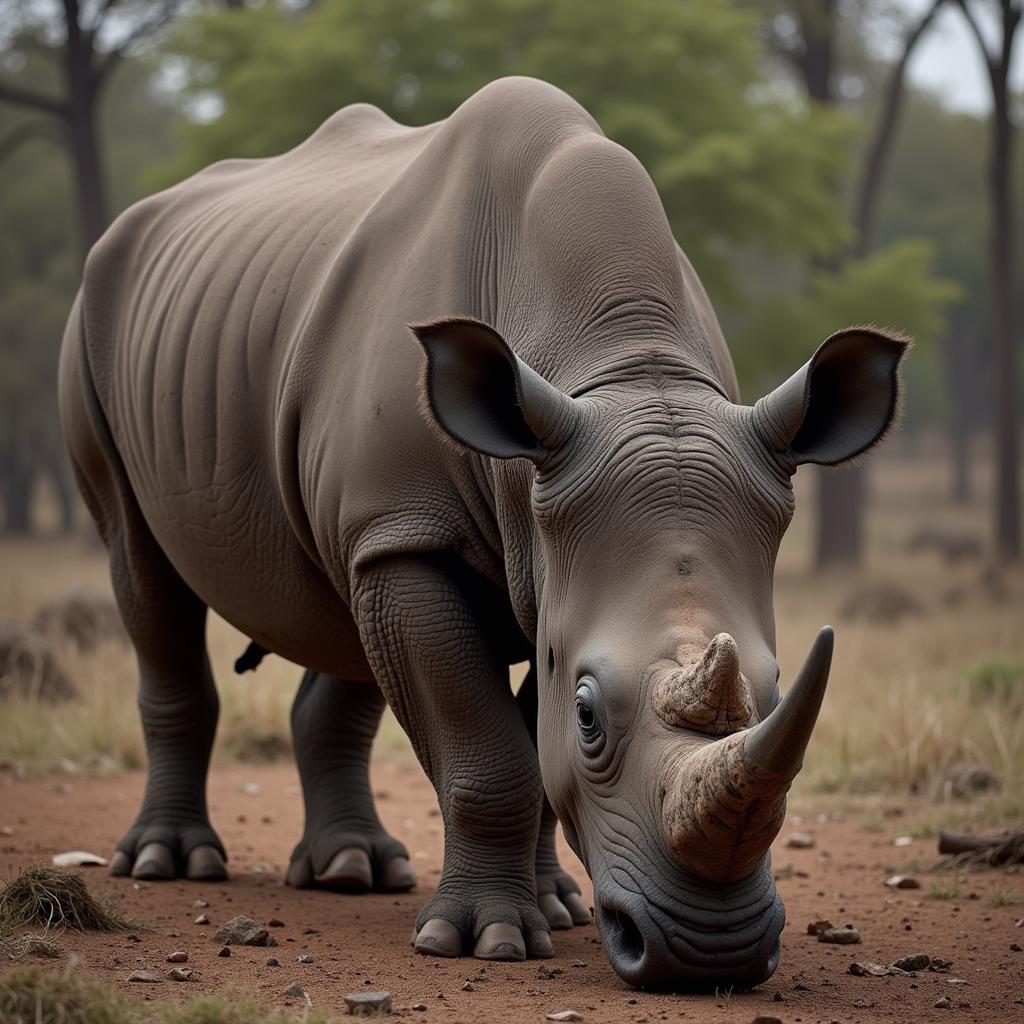The Art and History of African American Hair Braiding
African American Hair Braiding is more than just a hairstyle; it’s a rich tapestry woven with threads of history, culture, and tradition. From the intricate cornrows of ancient Africa to the vibrant box braids seen on runways today, this art form has always been a powerful expression of identity, resilience, and creativity.
 African American Hair Braiding History
African American Hair Braiding History
A Journey Through Time: Braiding in Ancient Africa
The roots of African American hair braiding can be traced back thousands of years to the African continent. In many ancient African cultures, hair braiding was an integral part of life, serving not only as a form of adornment but also as a way to communicate social status, ethnicity, and even marital status.
Different braiding patterns held specific meanings. For instance, warriors might wear specific braids to signify their tribe or victories in battle, while complex designs adorned the heads of women during important ceremonies. This tradition of imbuing hairstyles with meaning was carried across the Atlantic during the transatlantic slave trade.
Braiding as Resistance and Resilience
During slavery, African Americans faced unimaginable hardship and oppression. Stripped of their cultural identities, they found solace and strength in their hair. Braiding became more than just a hairstyle; it was a way to maintain a connection to their heritage and a silent form of resistance against the dehumanizing institution of slavery.
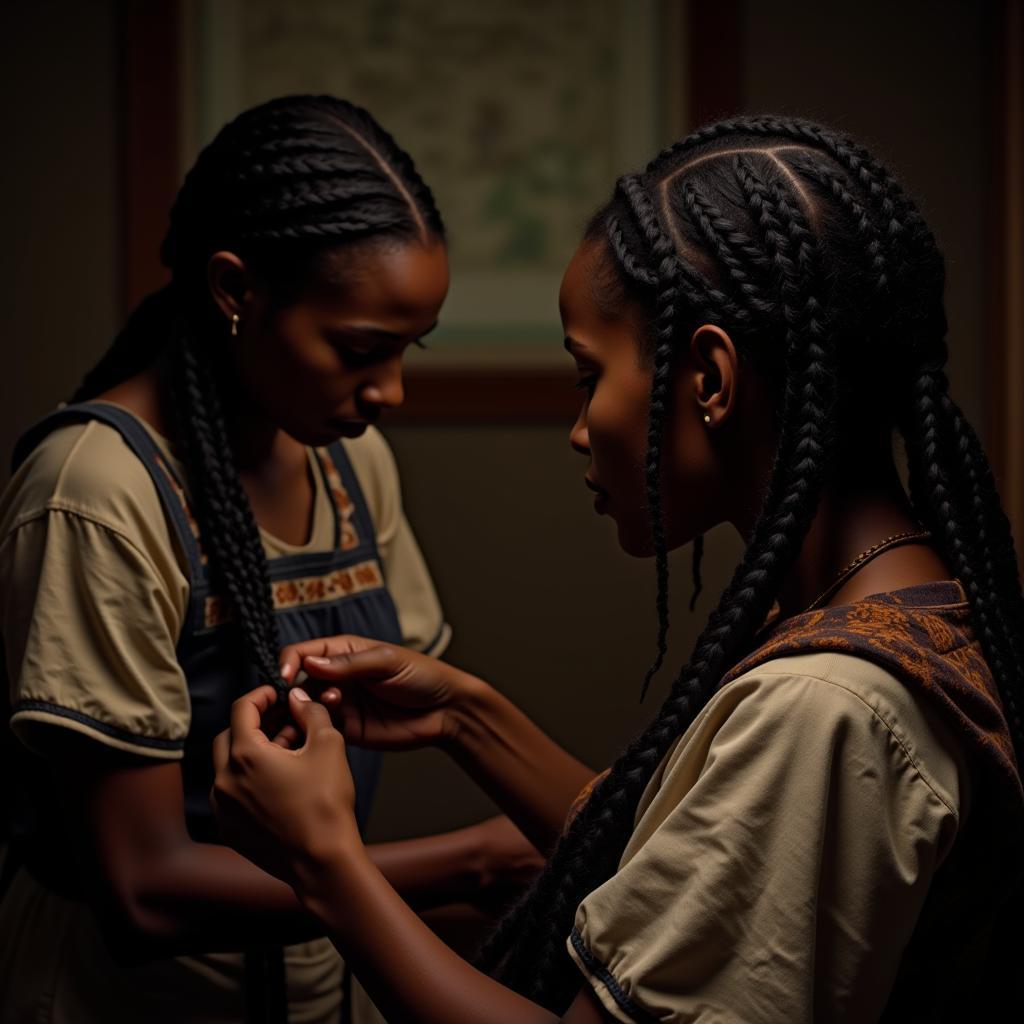 African American Hair Braiding as Resistance
African American Hair Braiding as Resistance
Intricate braiding patterns were often used to communicate secretly, with braids serving as maps to guide escaped slaves along the Underground Railroad. In this way, hair braiding became an act of defiance and a symbol of hope for freedom.
The Evolution of a Tradition: From Cornrows to Box Braids
Over the years, African American hair braiding has continued to evolve, incorporating new styles and techniques while remaining deeply rooted in tradition. From the classic cornrows, named for their resemblance to rows of corn, to the bold and versatile box braids, this art form has transcended generations, constantly adapting to reflect the changing times.
The Civil Rights Movement saw the rise of the Afro, a powerful symbol of Black pride and identity. Later, during the Black Power movement, braids experienced a resurgence in popularity as a way to celebrate natural hair texture and reject Eurocentric beauty standards.
African American Hair Braiding Today: A Celebration of Culture and Style
Today, African American hair braiding is experiencing a renaissance, embraced by people of all backgrounds as a beautiful and versatile form of self-expression. From celebrities gracing red carpets with intricate braided updos to everyday individuals rocking stylish cornrows and box braids, this art form has become mainstream while still retaining its cultural significance.
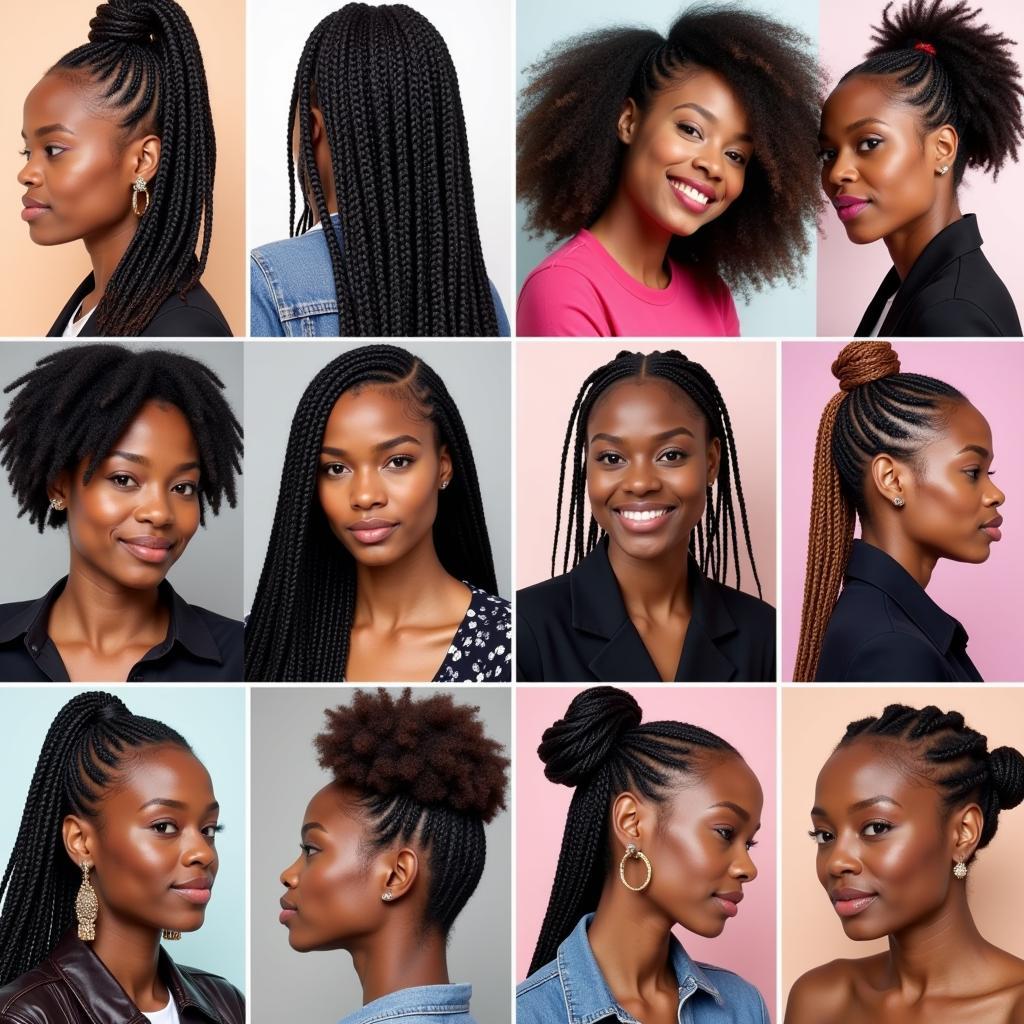 Modern African American Hair Braiding Styles
Modern African American Hair Braiding Styles
Finding a Braider and Maintaining Your Braids
If you’re looking to experience the beauty and versatility of African American hair braiding, you can find skilled braiders in many cities across the United States. To locate a reputable salon specializing in African American hair braiding in San Diego, you can search online directories or ask for recommendations from friends or family members. For those in the Omaha area, there are also talented stylists specializing in African American hair salons in Omaha, NE.
Proper hair care is essential for maintaining the health and longevity of your braids. Be sure to keep your scalp clean and moisturized, and avoid excessive tension on your hair when styling.
Conclusion
African American hair braiding is more than just a hairstyle; it’s a living testament to the resilience, creativity, and rich cultural heritage of African Americans. From ancient traditions passed down through generations to the modern styles seen on streets and runways today, this art form continues to empower, inspire, and captivate, serving as a powerful symbol of identity, beauty, and pride.
